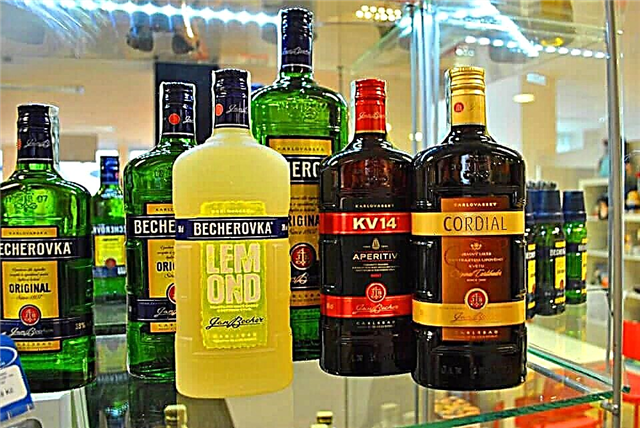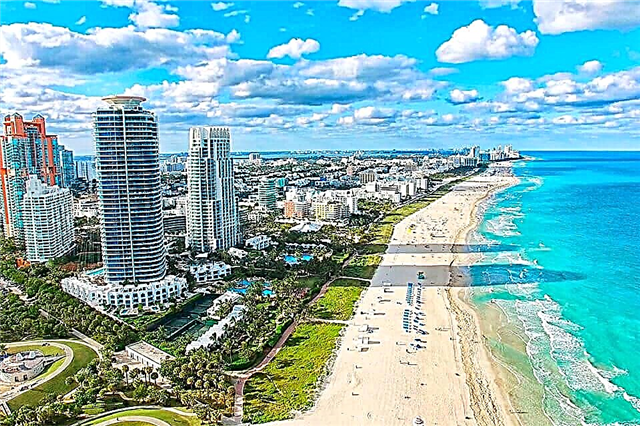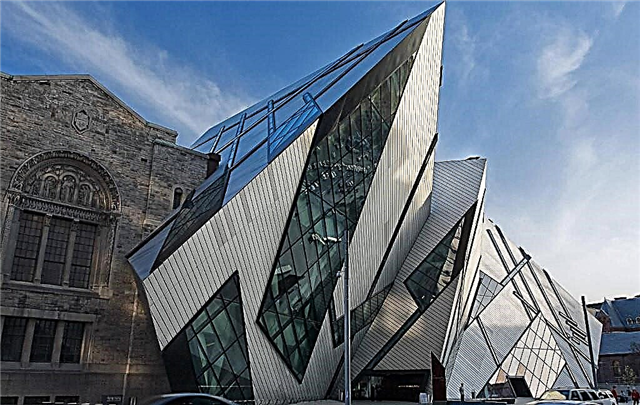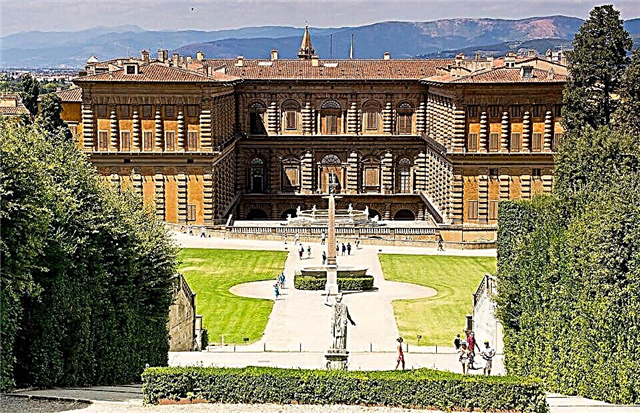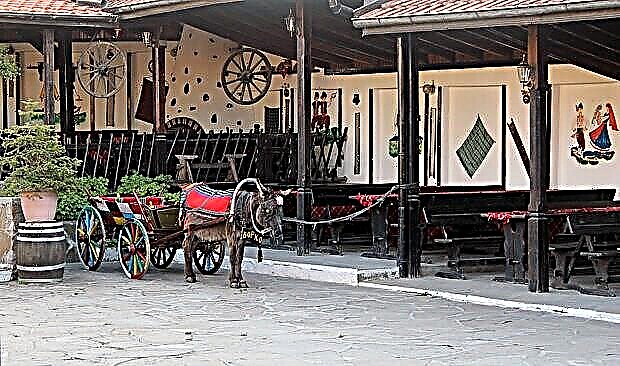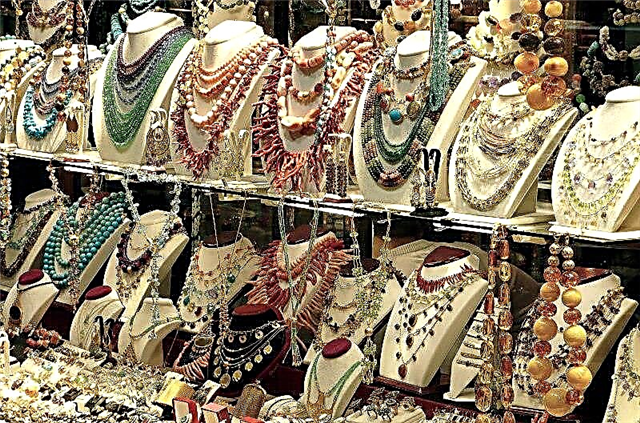An unusual temple, built in the 18th century, is located on the right bank of the Volga - in Selishche, one of the most ancient outskirts of Kostroma, which became part of the city only in 1932. These places are inextricably linked with the main milestones in Russian history. It was here in 1613 that the Great Zemsky Embassy stopped before arriving at the Ipatiev monastery, which arrived to call the young Mikhail Romanov to the kingdom. Today the temple has been restored. And, despite the fact that it is remote from the city center, many tourists and pilgrims come here.
Church history
Unique information about the temple has been preserved in many respects thanks to the chronicle kept by the priests who served here. These surviving documents cover the period from 1870 to the arrival of Soviet power and allow tracing the entire history of the ancient Kostroma settlement.

View of the church from Klyuchevskaya street
The old village is located opposite the Ipatiev monastery and begins its history from the XIV century. In the old days, forests grew in these places, and the uncrowded settlement was at first called Moshenina or Novoselki. According to the chronicles, there was one of the very first monasteries on the Kostroma land dedicated to St. Alexander. The Moscow prince Ivan Danilovich (Kalita), who died in 1340, mentions this monastery shortly before his death in a spiritual letter and bequeaths three villages to the Kostroma monastery.
By the beginning of the 17th century, the village belonged to the famous boyar I.M. Glinsky, and there were two wooden churches - in honor of the Prophet Elijah and George the Victorious. Later, Selishche was the patrimony of the boyar Gleb Ivanovich Morozov, whose wife, Feodosya Prokofievna, remained in the history of Russia as an active supporter of the Old Believers, who fell into disgrace and died during the church schism.

From left to right: Church of Alexander and Antonina, bell tower, west gate
An old legend is associated with the appearance of the first temple of Alexander and Antonina. Through Selishche lay the path of a rich nobleman and his pregnant wife. June 23, the day on which the Christian church commemorates those who lived in Rome Holy Martyrs Alexander and Antonina, the family had two children at once - a son and a daughter. The newborns were given the names of saints, and the nobleman ordered to build a wooden church in the village. It is noteworthy that to this day it is the only church in Russia dedicated to the holy martyrs Alexander and Antonina of Rome. Scripture books first mention her from the beginning of the 17th century.
It is known that in the 1770s there were two churches in Selishchi - the cold Alexander-Antoninovskaya and the warm St. George the Victorious, where there were chapels dedicated to the Prophet Elijah and the Moscow wonder-worker, the holy fool Vasily. In addition, there were four manor houses and about 70 peasant farms in the village.

View of the church from Verkhne-Selishenskaya street
Local landowners - Alexander Filippovich Moshkov, Vasily Danilovich Kablukov, as well as the dowager noblewoman Paraskeva Stepanovna Pyatnitskaya, as well as ordinary villagers, raised funds, and in 1779 the construction of a stone one-domed church began. Its consecration took place in 1786. In memory of the old wooden churches, two warm side-chapels were built in the brick church, dedicated to the Prophet Elijah and the Great Martyr George the Victorious. The temple ensemble also included a slender three-tiered bell tower with a long spire.
In 1831, retired Colonel Vasily Nikolayevich Myagkov, who was a descendant of Lieutenant Kablukov, built another church on the northwest side of the brick church. It was consecrated in honor of the patron saint of Myagkov, the Moscow wonder-worker, holy fool Vasily. However, a hundred years later, when the Soviet government fought against religion, the Vasilievsky temple was destroyed.
In the first half of the 19th century, a brick fence with several gates and an elegant chapel appeared around the church. A little later, in 1861, a huge bell weighing more than 250 poods was placed on the temple bell tower. In the 20th century, during the years of the state's struggle with religion, an unenviable fate awaited him. The huge bell was thrown to the ground and smashed.

By the beginning of the last century, the church played a prominent role among the Kostroma parishes. Her parables consisted of two priests, a deacon, and two psalmists. This fact suggests that the parish was rather big. Selishche itself grew greatly, and not only peasants, but also artisans and workers from neighboring factories who settled on the right bank of the Volga, became parishioners.
Every year, on the temple holiday - Alexander's Day, the main Christian shrine of Kostroma - the icon of the Fedorov Mother of God - was transported here along the Volga. At the beginning of the last century, a sobriety society was created at the church, which included 120 parishioners. A lot of work was carried out on the reconstruction of the building and its interiors. The warm side-altars were significantly expanded, a new four-tier gilded iconostasis was installed in the main church, and the ceiling and walls were covered with new paintings. In addition, donors donated a huge beautiful chandelier to the temple.

General view of the Church of Alexander and Antonina in Selishchi
The Selyshchenskaya church was one of the three Kostroma churches, where services never stopped. But the trials that befell Christian shrines during the years of Soviet power did not bypass the village. In 1922, almost all the valuable icons and items for the services were taken out of the church. In 1929, the Vasilievsky Church was closed. At first, a village club was made in it, but after two years this church was nevertheless demolished.
The priests who served in Selishche tried to help the disgraced priests of Kostroma and the city's suburbs, their families and ordinary parishioners, whose relatives were imprisoned or were shot. For this, Archpriest Pavel (Ostrogorsky), Archbishop Macarius (Karmazin) and Moscow professor N.I. Serebryansky were arrested and killed.
Later, in the late 30s and 40s, the temple was saved from closing by Father John (Kostin) who served here for about 40 years. It is to the clergy of the village that we owe the fact that the old church has survived to this day with almost no loss - both the church interiors and the old parish cemetery have survived.

Architecture and interior decoration
For more than two centuries, the ancient church was the first to meet everyone who comes to the ancient Kostroma from the side Yaroslavl... It was built in the Baroque style with elements of classicism and repeats the shape of the Church of the Savior on Zaprudna. And this is no coincidence, because both churches are located opposite each other, on opposite banks of the river.
The main temple volume is traditional - an octagon on a quadrangle. The eight-lane dome has round auditory openings - lucarnes and a small dome. To the west of the temple there is a one-storey massive refectory, and behind it is a bell tower. A set of 12 new bells, specially made for the Selyshchensky church in Voronezh, has recently appeared on it. True, to install them, all the old wooden beams had to be replaced with metal ones.
The murals of the church interiors were made at the beginning of the last century by Nikolai Iosifovich Demidov, a famous icon painter from Bolshoye Solei. All frescoes are enclosed in decorative ornamental frames. The main plots were painted in oil in the then accepted academic manner, and the painting of the ornaments was done on an adhesive basis. In the middle of the 20th century, the paintings were renewed by the artists I.I. and S.I. Dubovs. And in the 1970s, restorers worked on the frescoes under the direction of the artist A.M. Malafeeva.

The current state of the temple and the visiting regime
The church is active and open every day. Services are held here every day. The parishioners of the church publish the newspaper "Spiritual Interlocutor". In addition, there is a Sunday school for children and a summer camp for teenagers.
Particularly revered shrines are considered a particle of relics that belonged to the holy martyr Alexander, which was brought as a gift from Of Italy, a list of the famous icon of the Mother of God Igritsko-Smolenskaya and the image of St. Matrona of Moscow.
How to get there
The church is located on the street. Verkhne-Selishchenskaya, 35a.
By car. The road from the capital to Kostroma takes 4.5-5 hours (346 km) and runs along the Yaroslavl highway and the M8 highway (Kholmogory). In Kostroma, before reaching the road bridge across the Volga, in front of the RIO shopping center you need to turn left onto Zavolzhskaya street. Along it, Yaroslavskaya, Stroitelnaya and Moskovskaya streets, you need to go to Gorodskaya street, along which you can drive up to the temple. The entrance to it is located from the side of Verkhne-Selishchenskaya street.

Iconostasis of the Church of Alexander and Antonina in Selishchi
By train or bus. From the Yaroslavl railway station to Moscow trains reach Kostroma in 6.04-6.35 hours. In addition, from the Central Bus Station of the capital, located near the Shchelkovskaya metro station, you can get to Kostroma by regular buses (7 trips a day). This journey takes 6.50 hours. The Kostroma bus station is 1 km away from the railway station. You can drive up to the temple in the city by bus # 22 or minibus # 22, 76, 86 (stop "Selishche" or "River Klyuchevka"), and then walk 0.25-0.3 km. Or use a taxi.
Attraction rating:

